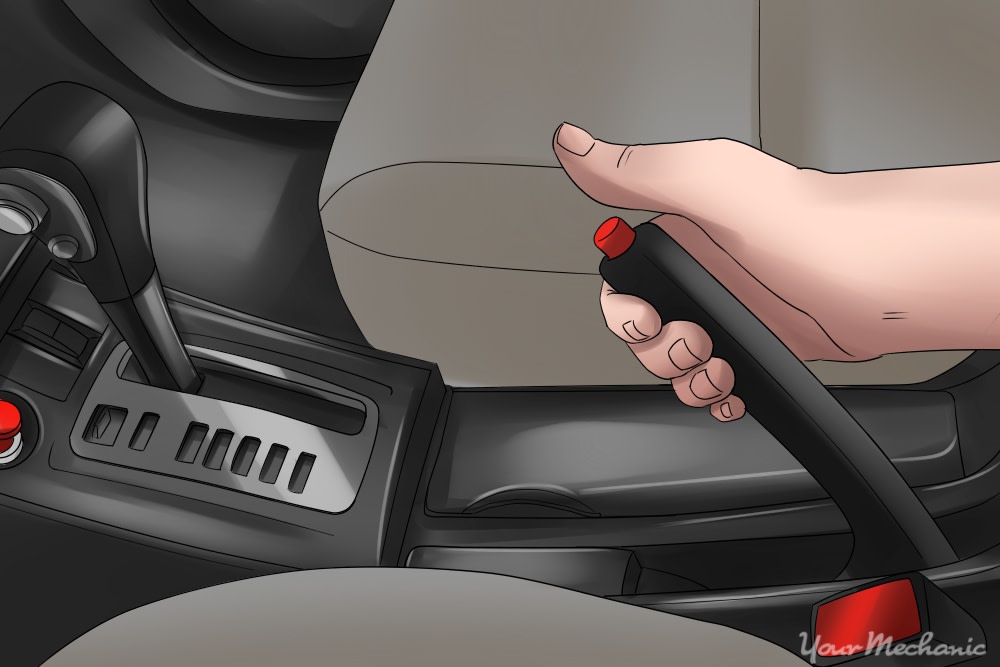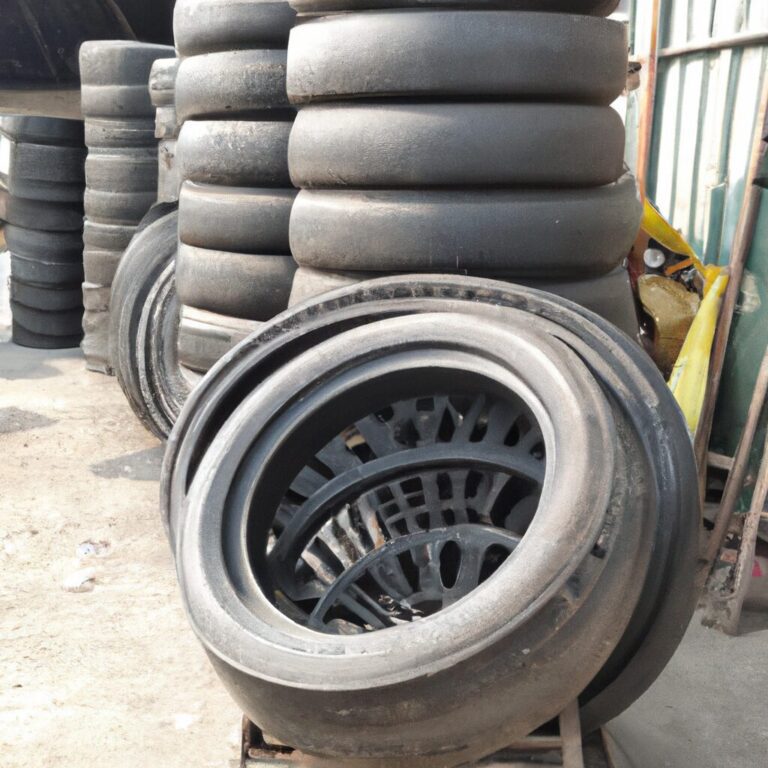How to Take off Parking Brake
To take off the parking brake, press the brake pedal firmly with your foot while simultaneously disengaging the parking brake lever or pushing the parking brake button. Taking off the parking brake is an essential step before driving your vehicle.
Whether you are starting your car after it has been parked or releasing the brake after an emergency stop, understanding how to properly disengage the parking brake is crucial for safe and smooth driving. We will explain the simple steps to take off the parking brake, ensuring that you can confidently maneuver your vehicle without any hindrance.
By following these instructions, you will be able to release the parking brake effortlessly and get on the road swiftly. So, let’s dive in and learn how to take off the parking brake effectively.

Credit: www.yourmechanic.com
Understanding The Parking Brake
The Purpose Of The Parking Brake
The parking brake, also known as the handbrake or emergency brake, is a secondary braking system designed to keep your vehicle stationary when parked. It provides an additional layer of safety and prevents the vehicle from rolling away.
Different Types Of Parking Brakes
- Mechanical Parking Brake
- Electric Parking Brake
- Foot-operated Parking Brake
Preparation For Releasing The Parking Brake
Before you can take off the parking brake, it’s important to go through a few necessary steps to ensure a smooth and safe release. This will help prevent any potential accidents or damage to your vehicle. In this section, we will guide you through the interior and exterior checks that need to be completed before releasing the parking brake.
Interior Check
Start by sitting in the driver’s seat and checking the dashboard for any warning lights or indicators. Look for any signs that the parking brake is engaged, like a specific light or an icon. If you see any indication that the parking brake is still on, it’s crucial to disengage it before proceeding.
If you are unsure whether the parking brake is engaged or not, try to lower your head and visually inspect the parking brake lever or pedal. Ensure that it’s in its fully released position. If the lever or pedal is still engaged, take the necessary steps to disengage it before continuing.
Exterior Check
Once you have completed the interior check, step out of the vehicle and visually inspect the exterior. Look for any physical signs that the parking brake is engaged, such as brake lights that are still illuminated or wheels that are locked in place. These can be indications that the parking brake hasn’t been fully released.
While inspecting, also check the parking brake lever or pedal from the outside to ensure it’s fully disengaged and in the correct position. Sometimes, it might appear released from the inside, but the mechanism may still be engaged. Confirm that the lever or pedal is in the default position, indicating that the parking brake is completely off.
Remember, taking the time to perform these interior and exterior checks is essential to ensure the parking brake is properly released before driving. Skipping these steps can lead to unnecessary complications or safety hazards. Once you have completed these preparations, you can confidently drive without the parking brake interfering.
Releasing The Parking Brake
When it’s time to hit the road, one crucial step is to release the parking brake. Engaging the brake release lever and dismounting the parking brake are the key actions you need to take. Let’s dive into each step and explore the process of releasing the parking brake.
Engaging The Brake Release Lever
Engaging the brake release lever is the first step in disengaging the parking brake. Locate the lever, usually positioned beneath the steering wheel or near the center console of your vehicle. Firmly grip the lever, ensuring a good hold, and depress the release button if there is one.
Dismounting The Parking Brake
Once you have engaged the brake release lever, it’s time to dismount the parking brake. The method of dismounting can vary depending on the type of parking brake you have in your vehicle. Here are a few common techniques:
- Foot Pedal: If your vehicle has a foot pedal parking brake, simply locate the pedal and press it down firmly with your foot. This action will release the brake, allowing your vehicle to move freely.
- Hand Lever: For vehicles with a hand lever parking brake, grip the lever firmly and pull it upwards or push it downwards, depending on the design. This action will disengage the parking brake and enable your vehicle to move.
Troubleshooting
Need to take off your parking brake but facing trouble? Follow these simple troubleshooting steps to release the parking brake easily. First, locate the parking brake lever or pedal. Then, gently apply pressure or release the lever or pedal to disengage the brake.
Stuck Parking Brake
When the parking brake gets stuck, follow these troubleshooting steps:
- Check if the parking brake lever is fully released.
- Inspect the cables for any signs of damage or corrosion.
- Apply lubricant to the cables to help loosen them up.
If the issue persists, seek professional assistance to avoid further damage.
Unusual Noises
If you hear strange noises when releasing the parking brake, consider these solutions:
- Check for any visible obstructions near the brake system.
- Inspect the brake pads for wear and tear.
- Ensure proper adjustment of the parking brake system.
Regular maintenance can prevent unusual noises and ensure smooth operation.
Maintenance And Care
To take off the parking brake, locate the lever or pedal inside your vehicle. Disengage by pulling the lever or pressing the pedal, ensuring the vehicle is in park or neutral. Check for any resistance and release slowly to prevent sudden movements.
Maintenance and Care Regular Inspection Regular inspection of the parking brake is crucial for its proper functioning. Ensure the parking brake is engaged and disengaged correctly. Inspect the brake cables and components for any signs of wear or damage. Test the parking brake on a regular basis to make sure it is holding the vehicle in place. Cleaning and Lubrication Cleaning and lubricating the parking brake mechanism can help prevent corrosion and ensure smooth operation. Regularly clean the parking brake components with a mild detergent and water to remove any dirt or debris. Inspect for any signs of corrosion and apply a light coating of silicone-based lubricant to the moving parts to prevent rust and ensure smooth operation. By following these maintenance and care tips, you can ensure your parking brake continues to function properly and safely.
Credit: m.youtube.com

Credit: www.youtube.com
Frequently Asked Questions For How To Take Off Parking Brake
How Do You Release A Parking Brake?
To release a parking brake, locate the parking brake lever or button in your car. Pull up or press down on the lever or button to release the brake. Make sure the car is in park or neutral before releasing the brake.
How Do You Disengage A Locked Parking Brake?
To disengage a locked parking brake, follow these steps: 1. Start the engine and engage the foot brake. 2. Locate the parking brake lever or pedal. 3. Depress the release button, pull up on the lever or push down on the pedal.
4. Gradually release the foot brake. 5. Confirm the parking brake is released before driving off.
Do I Remove Parking Brake First Or Take Car Out Of Park?
First, remove the parking brake, then shift the car out of park. This ensures a smooth and safe transition.
Can I Disable Parking Brake?
Yes, parking brake can be disabled, but it’s not recommended for safety reasons.
How Do I Release The Parking Brake?
To release the parking brake, locate the lever or button and press or pull it to disengage.
Why Is My Parking Brake Stuck?
A stuck parking brake could be caused by rust, dirt, or a malfunction in the cable or lever mechanism.
Can I Drive With The Parking Brake On?
Driving with the parking brake engaged can damage the brake system and lead to overheating, so it’s not recommended.
Conclusion
To sum up, mastering the art of releasing your parking brake is essential. By following these simple steps, you can ensure a smooth and hassle-free driving experience. Remember, safety always comes first, so practice regularly to perfect this skill. Say goodbye to parking brake woes and hit the road confidently.


